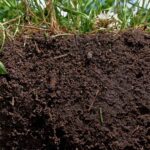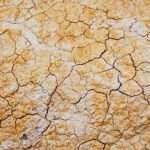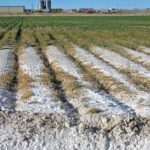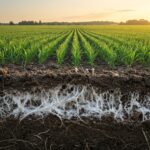Histosols are characterized by their abundance of organic matter. These unique soils, often referred to as organic soils or peats, form in environments where the decomposition of plant and animal material is slower than its accumulation. This fundamental characteristic gives them very particular properties that influence their use and management, especially in agriculture and ecology. In this article, we will explore in detail what Histosols are, how they form, their distinctive characteristics, and their relevance in various contexts.

What are Histosols?
Histosols are soils that are primarily composed of organic matter. To be classified as a Histosol, a soil must contain at least 20% organic matter (by weight) if the organic material is peat or more if the soil is saturated with water for long periods. This high concentration of organic material gives them very different properties compared to mineral soils.
How Do Histosols Form?
The formation of Histosols is intrinsically linked to conditions that inhibit the decomposition of organic matter:
- Water-saturated environments: Wetlands, swamps, and bogs create anaerobic conditions (lack of oxygen) that slow down the activity of decomposing microorganisms.
- Abundant vegetation: High biomass productivity in these environments ensures a constant addition of organic material (leaves, stems, roots).
- Cold climate: Low temperatures can also slow down decomposition.
- Acidity: In some wetlands, acidic conditions can inhibit microbial activity.
Over time, the accumulation of organic matter exceeds its decomposition rate, leading to the formation of the thick organic deposits characteristic of Histosols.
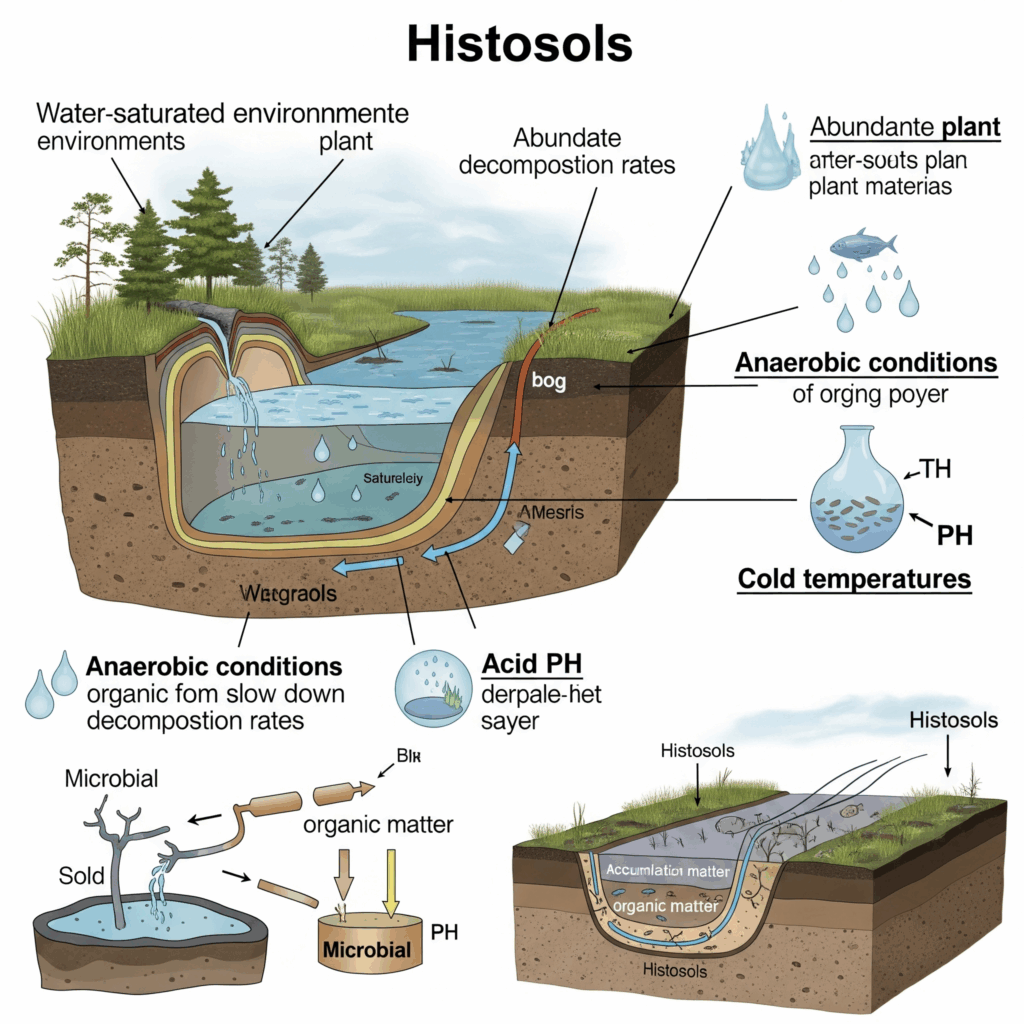
Characteristics of Histosols
Histosols exhibit a series of distinctive characteristics:
- High organic matter content: This is the defining characteristic, often representing most of the soil volume.
- Low bulk density: Due to the lightweight nature of organic matter, they have a low density compared to mineral soils.
- High water retention capacity: They can hold large amounts of water, although this water is often not as available to plants as in well-structured mineral soils.
- Low inherent fertility (in terms of mineral nutrients): Although rich in carbon, they can be deficient in essential mineral nutrients such as phosphorus, potassium, and some micronutrients.
- Variable acidity: pH can vary depending on the original vegetation type and water conditions.
- Low bearing capacity: They can be unstable and have a low capacity to support heavy loads due to their high water content and low density.
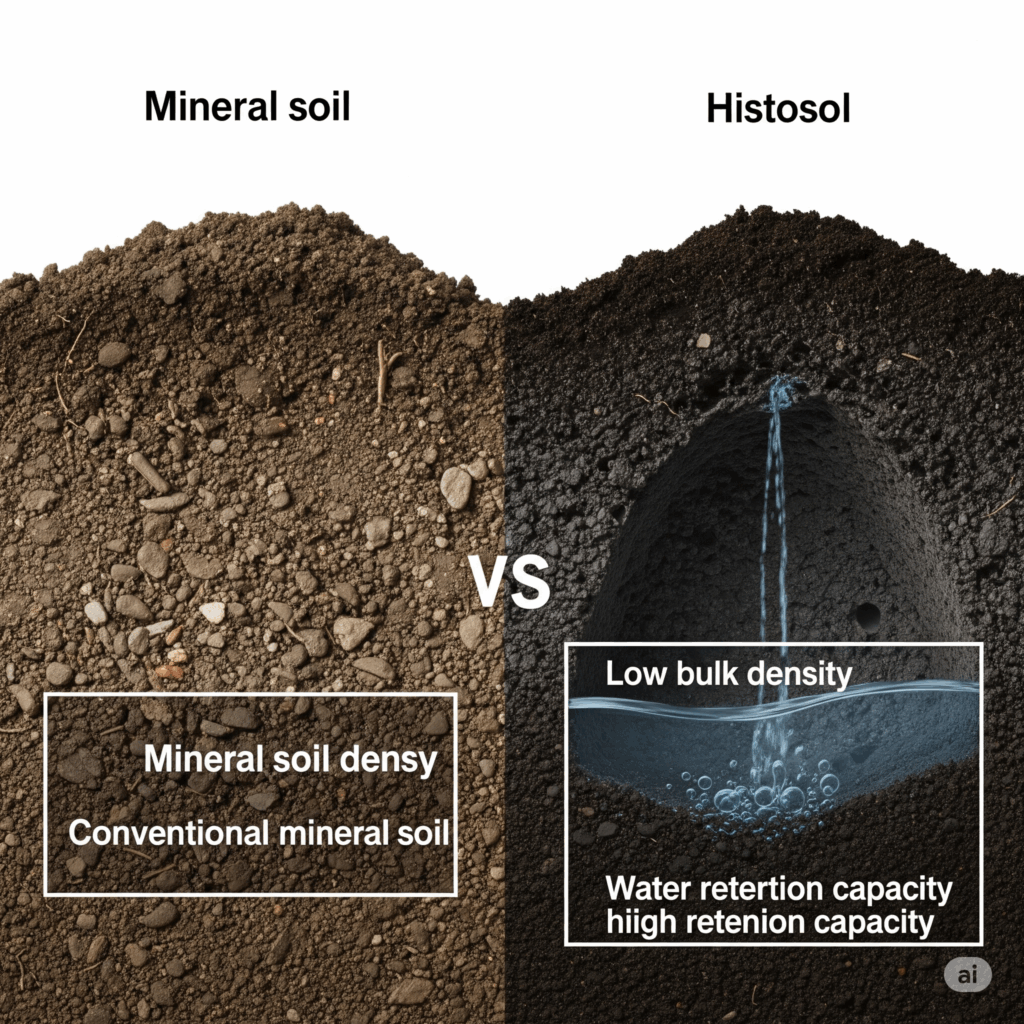
Relevance in Agriculture and Ecology
Histosols are significantly important in both agriculture and ecology:
Agriculture:
- Potential for specialized crops: When properly drained and amended with mineral nutrients, Histosols can be very productive for certain crops such as vegetables (carrots, onions, celery), blueberries, and some flowers.
- Management challenges: Drainage, aeration, compaction, and nutrient management are important considerations. They can also be susceptible to subsidence (sinking) once drained.

Ecology:
- Carbon storage: Histosols are important reservoirs of organic carbon, playing a crucial role in the global carbon cycle. Their drainage and cultivation can release large amounts of carbon dioxide into the atmosphere.
- Habitat for specialized flora and fauna: The wetlands where Histosols form harbor unique ecosystems with plant and animal species adapted to these conditions.
- Water regulation: They act as natural sponges, retaining water and releasing it slowly, which can help regulate water flows in the landscape.

Managing Histosols
The management of Histosols depends on their intended use:
For agriculture:
- Controlled drainage: Drain the soil to allow adequate aeration for crop growth, but avoid excessive drainage which can lead to subsidence and carbon release.
- Nutrient amendments: Supplement with mineral nutrients that are often deficient.
- Compaction management: Avoid heavy traffic to prevent compaction.
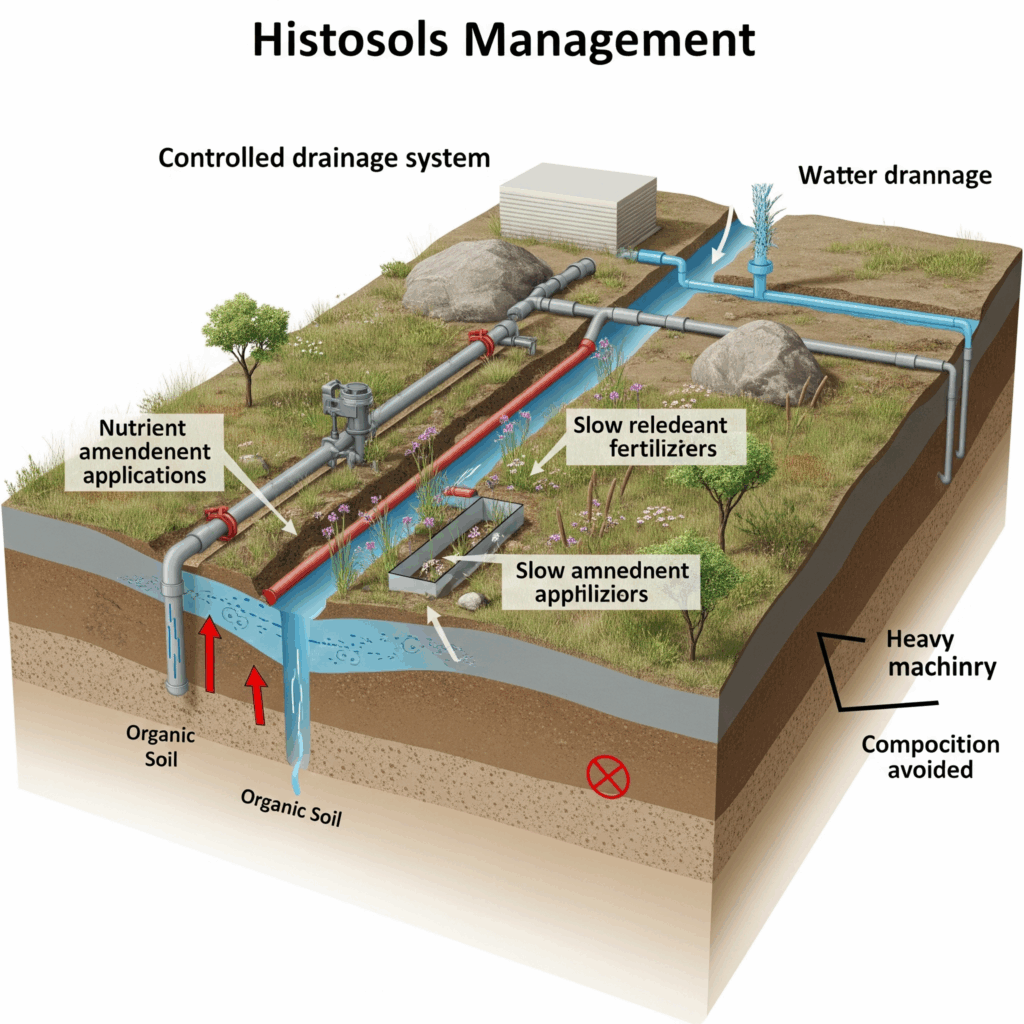
For ecological conservation:
- Wetland protection: Avoid drainage and disturbance to preserve their ecological function as carbon storage and habitat.
Conclusion: Earth’s Organic Treasures
Histosols, with their rich organic composition, are fascinating soils that play important roles in both specialized agricultural production and ecosystem regulation. Their management requires an understanding of their unique properties and the implications of their use, especially in relation to carbon storage and biodiversity conservation.
Have you worked with Histosols or visited wetlands with organic soils? What observations do you have about these unique soils? Share your insights in the comments!
 AgronoBlog – Agriculture Blog
AgronoBlog – Agriculture Blog 